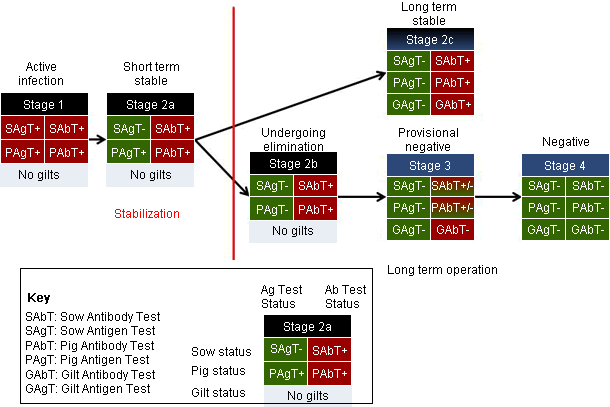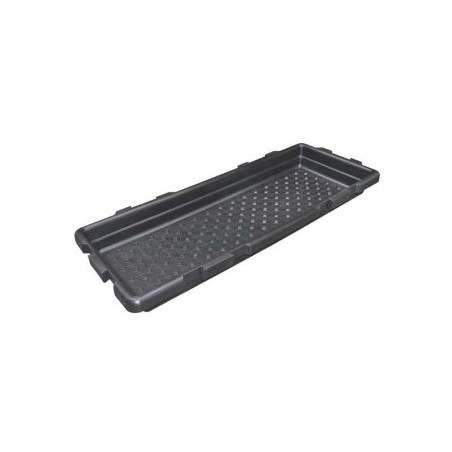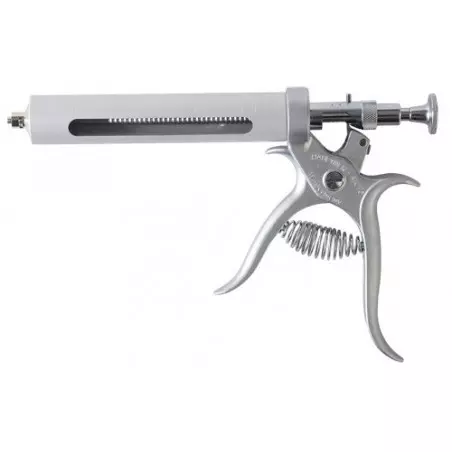If voting that we don’t like it could eliminate PRRS, we would have eliminated it in North America 10 years ago. Since it appears that hard work might be necessary to reduce the impact of PRRS a standardized scheme of management practices based on the best available evidence has been developed. This management scheme is based on the standardized categorization of herds that Holtkamp et al proposed in 2011. The categories are based on infection and transmission status of PRRSV within the herd to facilitate communication between producers and veterinarians and to aid the control of PRRSV transmission within herds and regions.
To achieve implementation over time and across herds a standard objective definition of herd status is required. The first step in defining the objective definition for herd status is to separate the results of testing into categories based on breeding herd (sow) and off spring (pig) status. Breeding herd status is defined in four categories: Infected (Stage 1, PCR, VI test positive), Positive (Stage 2, antibody positive, antigen negative) Mixed status (Stage 3, some antibody positive and some antibody negative) and Naïve (Stage 4, antibody and antigen negative). Pig status was defined as Positive (PCR, VI positive), Test negative (minimum of 8 consecutive weeks of 95/5 PCR testing on pigs at weaning) and True negative pigs born to sows that are Naïve. These definitions allowed for clear and accurate descriptions of herd status between all members of the health and production teams to facilitate discussion and understanding of when practices would be implemented.


Working from the assumption that the goal of the breeding herd was to produce weaned pigs that were truly free from PRRSV infection at weaning a risk based approach is adopted where the herds with the highest risk of sow to pig transmission (Stage 1) have the most intensive management strategies applied and the herds with the lowest risk of sow to pig transmission (Stage 4) had the lest intensive strategies applied.
The standardized management strategy based on PRRSV herd infection status is outlined in table 1. The table is separated into 4 sections: Testing strategy to prove status; Sow and gilt management practices; Farrowing house management practices and Piglet management practices. Each practice is defined and either allowed or not allowed for each herd PRRS stage. Customization of the management practice descriptions by referencing specific sections of a specific production system’s operating manual has been useful in improving implementation.
Table 1. Working definitions of piglet and sow management strategies based on herd PRRS status
| Herd PRRS Status1 | I (positive unstable) | II (positive stable) | III (provisional negative) | IV (negative) | ||
| Status description | 1: Unstable / active infection | 2a: Short term stable | 2b: Undergoing elimination | 2C: Long term stable | 3: Transitioning to negative - negative gilt replacements remain sero-negative for ≥ 2 months | 4: Negative - no ELISA positive and previously infected sows have been removed |
| Testing to prove status2 | Default state without diagnostics | 60 pigs per sampling; 4 consecutive weeks of 4 day old pigs; PRRS PCR Pool 5 | 60 pigs per sample: 4 weeks of 4 day old pigs and pigs at weaning; PRRS PCR, Pool 5 (total of 8 consecutive weeks of negative testing) | 60 pigs per sample: 4 weeks of 4 day old pigs and pigs at weaning; PRRS PCR, Pool 5 (total of 8 consecutive weeks of negative testing); Ongoing testing of 30 every other week or 60 every 4 weeks of weaned pigs; PCR, Pool 5 | ≥ 30 gilts are PCR and ELISA negative at least 1 month post introduction and remain negative; ongoing monthly testing of 30 weaned pigs; PCR, Pool 5 | 60 head PCR and ELISA negative over 2 consecutive samplings at least 30 day apart |
| Earliest to initiate testing to confirm status after herd closure | n/a | ≥ 22 weeks post infection (inoculation) and pigs born dead <12% of TB | After 4 consecutive negative tests of ≥ 60 4 day old pigs | After 4 consecutive negative tests of ≥ 60 4 day old pigs | 9 months | |
| Sow and gilt management | ||||||
| Gilt introductions | No | No | Yes – Naïve | Yes – Prev. infected | Yes – Naïve | Yes – Naïve |
| PRRS negative semen/boars | Yes | Yes | Yes | Yes | Yes | Yes |
| Prebreeding vaccines | No | Yes | Yes | Yes | Yes | Yes |
| Prefarrowing vaccines | No | Yes | Yes | Yes | Yes | Yes |
| Change needles between sows and gilts | Yes | Yes | Yes | Yes | Yes | No |
| Manure feedback prefarrow | No | No | No | No | No | Yes |
| Manure Feedback prebreeding | No | Yes | Yes | Yes | Yes | Yes |
| Tissue or serum feedback to gilts | No | No | No | No | No | Yes |
| Herd PRRS status1 | I (positive unstable) | II (positive stable) | III (provisional negative) | IV (negative) | ||
| Status description | 1: Unstable / active infection | 2a: Short term stable | 2b: Undergoing elimination | 2C: Long term stable - no shedding detected for ≥ 6 months | 3: Transitioning to negative - negative gilt replacements remain sero-negative for ≥ 2 months | 4: Negative - no ELISA positive and previously infected sows have been removed |
| Farrowing house management | ||||||
| Wash all crates with dry time between litters | Yes | Yes | Yes | Yes | Yes | No |
| Allow part weaning of rooms | No | No | No | Yes | Yes | Yes |
| Change needles and blades between litters | Yes | Yes | Yes | Yes | Yes | No |
| Use of warming tubs/ split suckle boxes | No | Yes | Yes | Yes | Yes | Yes |
| Use Processing carts | No | Yes | Yes | Yes | Yes | Yes |
| Piglet movements | ||||||
| Movements at less than 24 hours of age only for litter size3 | No | No | Yes | Yes | Yes | Yes |
| Fall back litter (1 nurse sow per 26 crates)4 | No | No | Yes | Yes | Yes | Yes |
| Pool small pigs in one litter5 | No | No | No | Yes | Yes | Yes |
| Holding pigs at weaning for quality | No | No | No | No | No | Yes |
Updated March 2012 v4.0 – Adapted from Lowe et. al., Proceedings of the AASV Annual Meeting 2012
1- Based on AASV working PRRS herd classifications, 2010
2- Individual herd PRRS testing plans will be implemented and reviewed for each herd. These are to serve as a guideline for testing plan development and interpretation.
3- At the time of farrowing, litters are balanced for numbers so that a sow has the same number of pigs as she has functional teats. For any litter, pigs should only be added or removed but not both (Sows are either donors or recipients of pigs but not both). The goal is to minimize the number of piglet movements at the time of farrowing. Piglets need to suckle their own dam’s colostrum to optimize both the transfer of passive immunity and the development of their own immune system. We also know that throughout the sucking period there continues to be transfer of immunity from dam to offspring that is most effective between related animals. This means that the more pigs that are raised by their own dam the better. In addition, teat order is firmly established by 24 hours of age and movements after this time is likely to result in two pigs competing for the same gland and another gland drying up from lack of use. This will result in additional “fall back” pigs that would have to be placed on a nurse sow or will die prior to market.
4- After litters are established (>24 hours of age) pigs can be moved to nurse litters (new litter) but at no time should pigs be replaced on litters that have had a dead pig or individual pigs swapped between litters.
5- Small pig litters are litters that are made at 24 hours of age or less were all of the small pigs in the room are placed in one or more litters. Often these pigs are moved when wet. By definition these sows are both a donor and a recipient. This is higher risk than all other forms of movement.
Sow and gilt management strategies were designed to minimize the risk of sow to sow transmission of PRRSV. The most intensive practices were implemented in herds with the highest rates of viremic/shedding sows with rapid removal of those intensive practices as the rate of sow viremia/shedding was reduced. The practices utilized are stopping gilt Introductions (stages 1, 2a); Use of PRRS Negative semen/boars (all), stopping Prebreeding and prefarrowing vaccines (Otake et al. 2002) (stage 1), changing needles between sows and gilts (Otake et al. 2002) (stages 1, 2, 3), stopping manure feedback prefarrow (Pitkin et al., 2009 and Dee et al. 2009) (stages 1, 2, 3) and manure feedback prebreeding (Pitkin et al., 2009 and Dee et al. 2009) (stage 1) and stopping tissue or serum feedback (mummies, placentas) to gilts (Pitkin et al., 2009 and Dee et al. 2009) (stages 1, 2, 3).
Farrowing house management practices are defined as those that involved the physical use of the farrowing house. There are all designed to limit litter to litter transmission of PRRSV in the farrowing house. The practices that are utilized are wash all crates with dry time between litters (Dee et al. 1994) (stages 1, 2, 3), do not allow part weaning of rooms (Dee et al. 1994) (stages 1, 2a, 2b); change needles and blades between litters when processing or treating pigs (Otake et al. 2002) (stages 1, 2, 3), stop the use of use of warming tubs/ split suckle boxes at birth (Pitkin et al., 2009 and Dee et al. 2009) (stage 1), and stop the use processing carts (Pitkin et al., 2009 and Dee et al. 2009) (stage 1).
Piglet management practices are designed to stop pig to pig (or litter to litter) transmission of PRRS in the farrowing house. These practices were adapted from the original “McREBEL” processes (McCaw. 2000) but were separated into specific practices for clarity and ease of implementation. The practices employed in this section are: stop movements of pigs between litters (stage1, 2a). Limit movements between litters to less than 24 hours of age but only for number of pigs per litter (stages 2b, 2c, 3,4), allow use of one fall back litter (nurse sow) per 26 crates (stages 2b, 2c, 3,4), allow pooling of small pigs at birth in one litter (stages 2c, 3, 4), hold pigs for 7 additional days at weaning for quality reasons (stage 4).
The development of this management scheme was not intended to define new practices or procedures for sow farm PRRSV management. It was developed as a way to improve communication of what needed to be done to improve the chances of success in stabilizing and managing breeding herds. The scheme categorizes the key management interventions in a way that can be used by the farm team and creates a way to streamline communication within an between production systems to create long term opportunities to understand what practices are of the greatest value and adaption of the scheme over time to improve outcomes.








